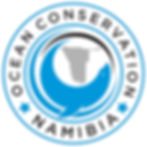
Deep Sea Mining
What Is Deep-Sea Mining?
Deep-sea mining is the process of extracting minerals from the seabed, often at depths of over 1,000 meters. Companies target valuable resources such as manganese nodules, cobalt, nickel, and rare earth elements - all used in electronics, batteries, and renewable energy technologies. Proponents argue that these minerals are essential for the “green transition.” But mining the deep sea means destroying fragile ecosystems that have taken millions of years to form. Unlike land, the deep ocean cannot easily recover from large-scale industrial disturbance.
Why Do Companies Want to Mine the Ocean?
The demand for minerals like cobalt and nickel is rising due to the boom in electric cars, smartphones, and renewable energy storage. Mining companies argue that the seabed offers a vast, untapped resource that could meet this demand. However, the push to exploit these resources often overlooks the environmental cost. Deep-sea ecosystems are poorly understood, and mining risks wiping out species before we even discover them. The race for profit could permanently damage ecosystems that sustain the planet.
Where Is Deep-Sea Mining Planned?
Why Is Deep-Sea Mining Harmful?
Mining the seabed means dredging or drilling through fragile habitats that have developed over millions of years. Sediment plumes can smother marine life, while noise and light pollution disturb deep-sea creatures adapted to total darkness. Once destroyed, these ecosystems may never recover, leading to permanent biodiversity loss. Many of these habitats also play a role in storing carbon, meaning mining could accelerate climate change. In short, the risks are far greater than the potential rewards.
The Threat to Fisheries and Coastal Communities
Deep-sea mining does not just affect the ocean floor. It can also harm fisheries and coastal communities. Sediment plumes and chemical pollution may drift into shallower waters where people rely on fish for food and income. In Namibia, where local fishing communities already face challenges from overfishing, adding seabed mining would deepen the crisis. Healthy fish stocks are essential for both local livelihoods and national exports. Risking them for short-term mineral profit is not sustainable.
Is Deep-Sea Mining Happening in Namibia?
Namibia has been at the center of global debates on seabed mining, particularly around marine phosphate extraction. The controversial Sandpiper Project near Walvis Bay has been on hold for years due to legal battles and environmental concerns. While no commercial mining has started yet, companies continue to push for licenses. Scientists, fishers, and conservation groups warn that phosphate mining would devastate Namibia’s marine ecosystems and fisheries.
For now, Namibia has a chance to stop deep-sea mining before it begins.
Subscribe to Ocean Conservation's
Monthly Newsletter!
Want to see past editions? Visit our Newsletter Archive
Questions? Visit our Frequently Asked Questions
The Ocean Conservation Namibia Trust is a registered charitable trust with the Namibian High Court.
Ocean Conservation Namibia, PO Box 5304, Walvis Bay Namibia
Ocean Conservation International is registered as a non-profit entity under chapter 501(c)(3) in the U.S.
Ocean Conservation International, 8 The Green, STE A, Dover , DE 19901
Contact us: info@ocnamibia.org
Please visit our Frequently Asked Questions for more information on our rescues.
